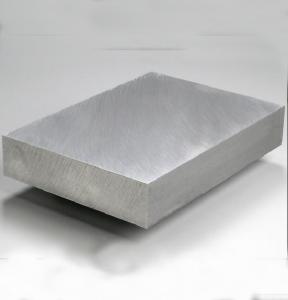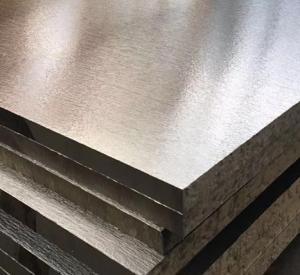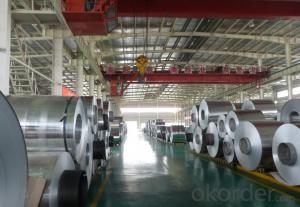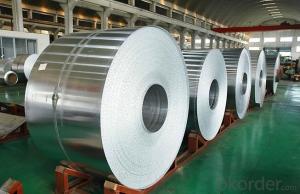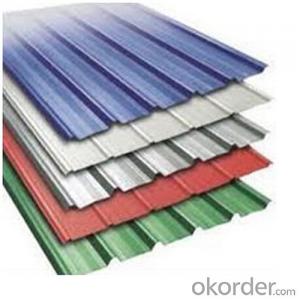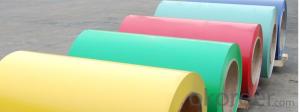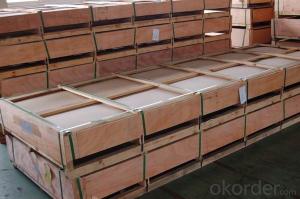7075 T651/T6 Aluminium thick plates 8-150mm
- Loading Port:
- Shanghai
- Payment Terms:
- TT or LC
- Min Order Qty:
- 5 m.t.
- Supply Capability:
- 20000 m.t./month
OKorder Service Pledge
OKorder Financial Service
You Might Also Like
Item specifice
7075 Aluminium Plates
1) Alloy : 7075
2) Temper: T6, T651
3) Thickness: 8mm-150mm
4) Width:20mm to 2000mm
5)Length: ≤ 12000mm
6) Protective film can be added
7) Production Line: DC production line
Character:
High-Hardness for industry applicatiom
Eco-friendly, recoverable and recyclable
Application:
widely used for mold, plane and boat, the main application are for industry, which are targeting for retail market and food service market, such as hypermarket, chain store and hotel, restaurant etc.
Packing:
SEAWORTHY PACKAGE
FAQ
Q1:Do you provide sample? How many days will samples be finished?
Free samples will be provided if needed, but customers should undertake shipping cost or freight charges, samples will be finished in 5-7days
Q2: Can we visit your factory?
Welcome to our factory at any time.
Q3: Complaint solving process
Finding your salesman—Salesman provide you the solution (If it’s our responsibility, we will resend substitutes or return money or provide discount for your next order, etc.; If it’s shipping company’s responsibility, we will also help you until the problem is resolved.) —If salesman can’t solve your problem, please call our manager .
Q4: Delivery time
3~30working days after confirming the payment. If the order is urgent, we will push our workers to finish in advance.
Q5: What's your MOQ?
Normally 8MT are requested as the minium order quantity ,we shall give
additional instructions in special circumstances.
Q6: What are the terms of payment and currencies do you accept?
T/T or L/C is accepted, currently we appreciated your payment through
USD,EUR, RMB
Q7: Do you accept customized orders?
Yes, we do. Your customized orders are always welcomed. Please kindly offer us your samples or drawings, so that we can customize the products according to your preferences. About any further detail, please feel free to contact us.
Q8: What information should I let you know if I want to get a quotation?
Your detailed requirements regarding the products's dimensions, including shape, thickness, top out (length*width*height), and your order quantity are highly appreciated if you want further information about our quotation
Q9: How about the mass production?
The lead time of mass production depend on quantity, usually 25-30days (20FT) .
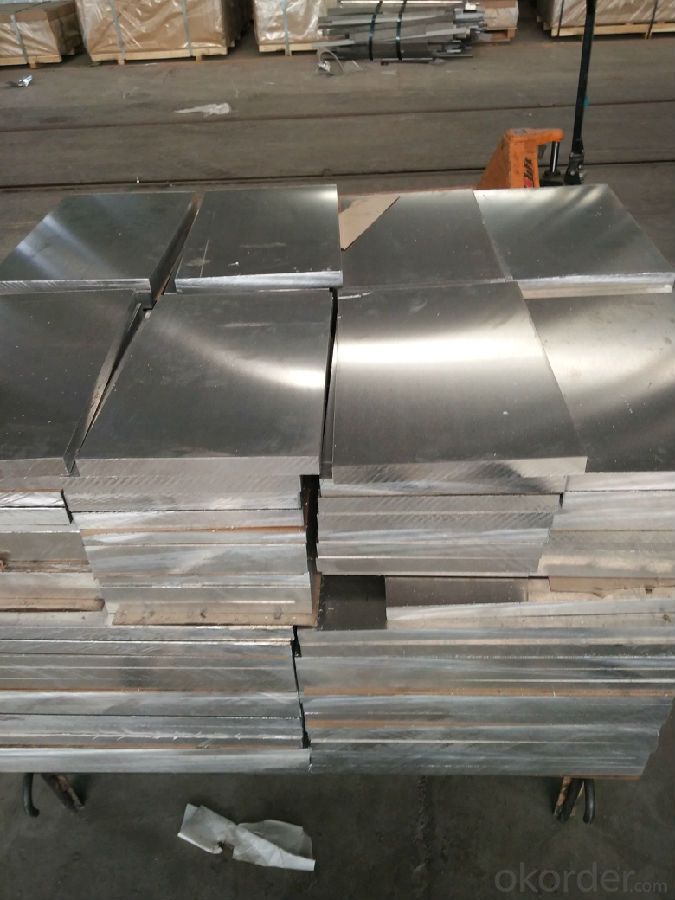
- Q:Can someone explain the movement of electrons in a pure block of aluminum metal? At they free to move around between similar energy levels? Are they bound to Al atoms? What about orbital overlap?
- Any element that allows the transfer of electrical flow to move across it usually has the characteristic of having free movement electrons in the outer shell. This is why metals are particularly good at electrical conduction. The best metal for transferring electrical charge is silver followed by copper and then aluminum. Much electrical wire is made from pure aluminum because it is cheaper than copper or silver and the resistance to flow is only slightly lower than copper. The electrons in the outer shells are still bound to the aluminum nucleus but they are free to accept a charge from neighboring aluminum atoms and transfer that charge to the next aluminum in the electrical flow. This is basically the definition of electrical resistance. Copper performs this transfer more efficiently than aluminum so it's electrical resistivity is less than aluminums. But in both base metals, the outer electrons never leave the atom, they simply transfer their charge to the next atom in line
- Q:Can aluminum sheets be used for solar reflectors?
- Indeed, solar reflectors can utilize aluminum sheets. With its high reflectivity and exceptional resistance to heat, aluminum emerges as an optimal material for such purposes. The reflectiveness of aluminum sheets aids in redirecting and intensifying sunlight onto solar panels or other solar equipment, thereby maximizing their energy efficiency. Moreover, the lightweight and durable nature of aluminum renders it effortlessly manageable and fitting for outdoor applications.
- Q:What are the different types of surface treatments for aluminum sheets in the marine industry?
- Some of the different types of surface treatments for aluminum sheets in the marine industry include anodizing, powder coating, chromate conversion coating, and painting.
- Q:The corrosion of the aluminum sheet that I request is friction during operation, not the surface of the container after the passivation of the surface of the container containing sulfuric acid. I'd like to use the evaporating plate, the evaporator fin and so on for the cooling in the quick freezing equipment. The ice of ice making machine is attached to the aluminum plate after anodic oxidation or passivation. When it is peeled off, it will cause friction to the surface of the aluminum plate and block the passivation layer, which will make the aluminum plate easier to corrode.
- Directly on the surface coating H2SO4Because the AL and H2SO4 react to produce a dense oxide film that prevents corrosion again, the barrel containing sulfuric acid can be made from AL
- Q:How do you calculate the weight of an aluminum sheet?
- To calculate the weight of an aluminum sheet, you need to consider its dimensions (length, width, and thickness) and the density of aluminum. First, measure the length, width, and thickness of the aluminum sheet in inches or millimeters. Make sure to use the same unit of measurement throughout the calculation. Next, convert the dimensions to feet or meters if necessary. For example, if the dimensions are in inches, divide each value by 12 to convert it to feet. Multiply the length, width, and thickness together to find the volume of the aluminum sheet. If the dimensions are in different units, convert them to the same unit before multiplying. Then, look up the density of aluminum. The density of aluminum is approximately 2.7 grams per cubic centimeter or 2700 kilograms per cubic meter. Convert the volume of the aluminum sheet to the same unit as the density. For example, if the density is in kilograms per cubic meter and the volume is in cubic feet, convert the volume to cubic meters by multiplying it by 0.0283. Finally, multiply the volume of the aluminum sheet by the density of aluminum to get the weight of the sheet. The result will be in grams or kilograms if the density was in grams per cubic centimeter, or in kilograms or metric tons if the density was in kilograms per cubic meter. It's important to note that this calculation assumes a uniform thickness throughout the aluminum sheet. If the sheet has varying thicknesses, you would need to calculate the weight of each section separately and then sum them up to find the total weight.
- Q:Aluminum plate belongs to steel or non ferrous metal?
- Of or consisting of pure aluminum or aluminum alloy material made by pressing (cutting or sawing); a rectangular material with a rectangular cross section and a uniform thickness. See China ferroalloy on line
- Q:Can aluminum sheets be used for cookware?
- Yes, aluminum sheets can be used for cookware. Aluminum is a popular material for cookware due to its excellent heat conductivity and lightweight properties. Aluminum sheets are often used as the base or core material in the construction of cookware, such as pots, pans, and baking sheets. They are typically coated with a nonstick or ceramic layer for added durability and ease of use. However, it is important to note that pure aluminum is reactive with certain acidic or alkaline foods, which can cause a metallic taste or discoloration. To prevent this, most aluminum cookware is anodized or coated to create a barrier between the food and the aluminum surface. Overall, aluminum sheets are a versatile and commonly used material for cookware in both professional and home kitchens.
- Q:How does the surface treatment of aluminum sheet affect its appearance?
- The surface treatment of aluminum sheet greatly affects its appearance. Aluminum, in its natural state, has a shiny and reflective surface that can be enhanced or altered through various surface treatments. One common surface treatment for aluminum sheet is anodizing. Anodizing involves creating a protective oxide layer on the surface of the aluminum through an electrochemical process. This treatment can produce a wide range of colors and finishes, from vibrant and opaque to translucent and metallic. Anodized aluminum sheets can have a sleek, modern appearance and are commonly used in architectural and decorative applications. Another surface treatment option is painting or powder coating. These processes involve applying a layer of paint or powder to the aluminum sheet's surface. This treatment allows for customization in terms of color, texture, and finish. Painted or powder-coated aluminum sheets can have a smooth, glossy appearance or a textured, matte finish depending on the desired outcome. This treatment is commonly used in industries such as automotive, aerospace, and construction where aesthetics and durability are important. Further, aluminum sheets can undergo mechanical surface treatments such as brushing or polishing. Brushing involves creating parallel lines on the surface of the sheet using abrasive pads, resulting in a brushed or satin finish. This treatment can give aluminum sheets a contemporary, industrial look. Polishing, on the other hand, involves buffing the surface to a high gloss, mirror-like finish. This treatment is often used for decorative purposes, such as in the production of jewelry or household items. Overall, the surface treatment of aluminum sheet plays a crucial role in determining its appearance. Whether it is anodizing, painting, powder coating, brushing, or polishing, each treatment offers a unique visual effect that can enhance the aesthetic appeal of the aluminum sheet for specific applications and industries.
- Q:Can aluminum sheets be anodized in different colors?
- Yes, aluminum sheets can be anodized in different colors. Anodizing is an electrochemical process that creates a protective oxide layer on the surface of aluminum, and this layer can be dyed to achieve various colors.
- Q:Are aluminum sheets suitable for chemical processing equipment?
- Under certain conditions, chemical processing equipment can utilize aluminum sheets. Aluminum demonstrates good resistance to a variety of chemicals, including acids and alkalis. It exhibits exceptional resistance to corrosion in acidic surroundings like hydrochloric acid and sulfuric acid, as well as alkaline solutions such as sodium hydroxide. However, it is crucial to acknowledge that aluminum is not universally suitable for all chemical processes. It is not advisable to employ it in applications involving potent oxidizing agents like nitric acid or chromic acid, as these substances can swiftly corrode aluminum. In addition, aluminum is incompatible with certain organic solvents and can react with them, leading to equipment degradation or malfunction. In certain situations, aluminum can be employed in chemical processing equipment by employing protective coatings or linings to bolster its resistance against specific chemicals. This approach can enhance its longevity and broaden its range of applications. In conclusion, although aluminum sheets can be appropriate for chemical processing equipment in numerous cases, it is imperative to carefully evaluate the specific chemicals and operating conditions involved to ensure compatibility and steer clear of potential corrosion or malfunction issues.
1. Manufacturer Overview |
|
|---|---|
| Location | |
| Year Established | |
| Annual Output Value | |
| Main Markets | |
| Company Certifications | |
2. Manufacturer Certificates |
|
|---|---|
| a) Certification Name | |
| Range | |
| Reference | |
| Validity Period | |
3. Manufacturer Capability |
|
|---|---|
| a)Trade Capacity | |
| Nearest Port | |
| Export Percentage | |
| No.of Employees in Trade Department | |
| Language Spoken: | |
| b)Factory Information | |
| Factory Size: | |
| No. of Production Lines | |
| Contract Manufacturing | |
| Product Price Range | |
Send your message to us
7075 T651/T6 Aluminium thick plates 8-150mm
- Loading Port:
- Shanghai
- Payment Terms:
- TT or LC
- Min Order Qty:
- 5 m.t.
- Supply Capability:
- 20000 m.t./month
OKorder Service Pledge
OKorder Financial Service
Similar products
New products
Hot products
Hot Searches
Related keywords
